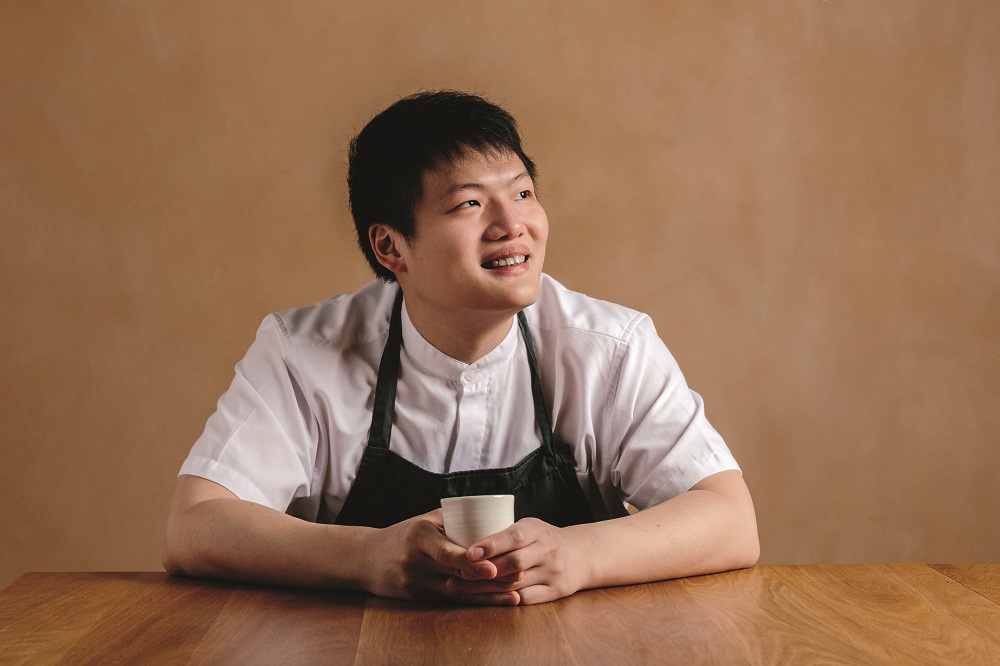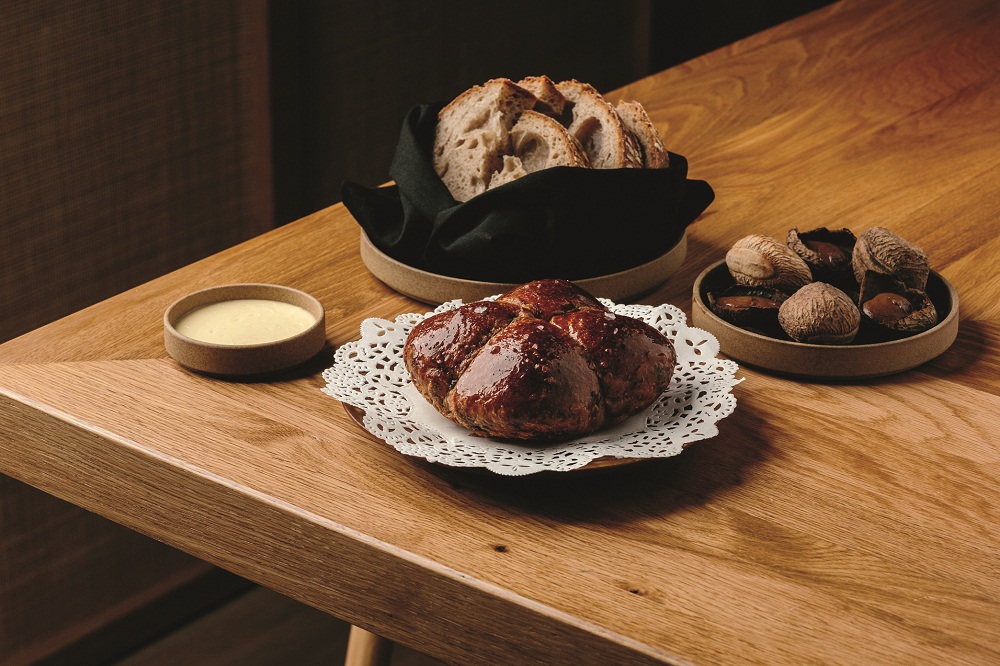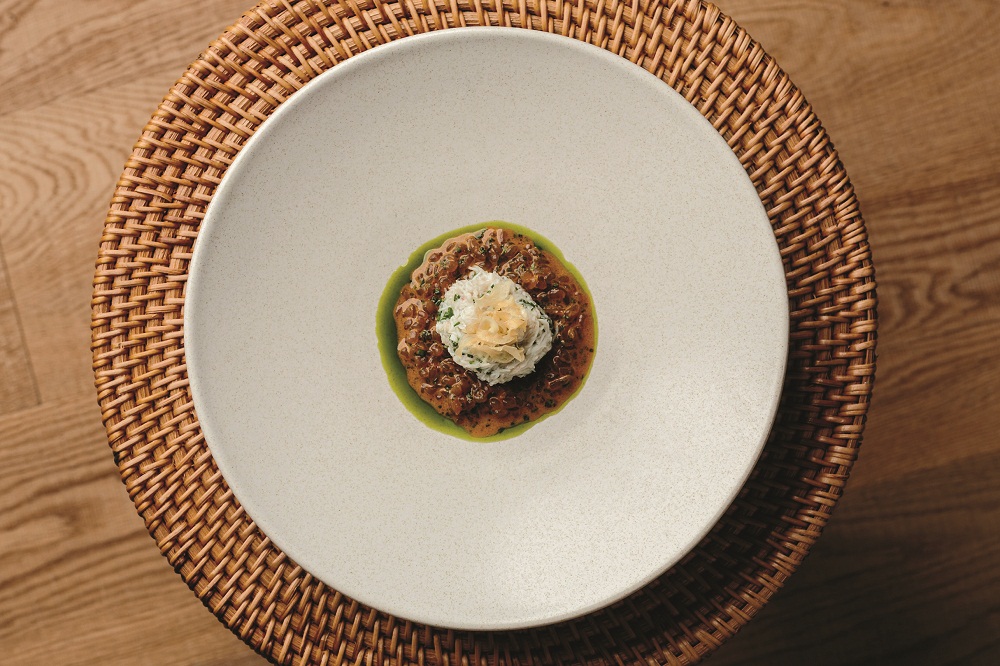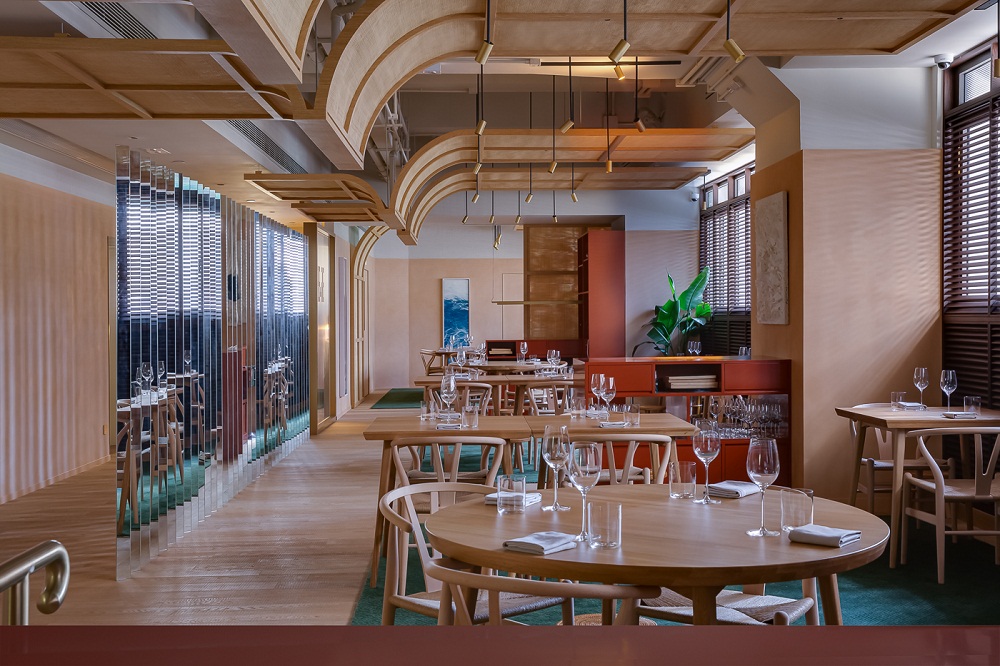Singapore-born chef Barry Quek talks to epicure about his passion for local Singaporean flavours and how he flawlessly incorporates them into his mod-European Asian menu at Whey, his new restaurant in Hong Kong.

The recently opened Whey on the upper ground floor of Hong Kong’s The Wellington in Central is the newest address for Singaporean chef Barry Quek. Here, he introduces diners to modern European cuisine reimagined with Asian nuances and Singaporean influences.
Quek has trained in some of the world’s most renowned restaurants including Michelin-starred Joël Robuchon and Les Amis in Singapore, In De Wulf in Belgium and Attica in Melbourne. He moved to London in 2015 to work as a sous chef at Portland and helped to open their sister restaurant, Clipstone. Quek then headed back to Hong Kong to open mod-European Beet, which shuttered last year.
A new perspective
Whey is now Quek’s latest venture, and the talented chef is now on a mission to seamlessly bring together his international experience and Singaporean flavours of his childhood and upbringing. Diners can look forward to popular Lion City flavours such as bak kut teh, laksa and even durian on the young chef’s latest menu.
Whey embodies Quek’s cooking style where he elevates his dishes by using high-quality local ingredients and produce, and applying fermenting and pickling techniques he learnt overseas. With the belief that sustainability comes in small steps, Whey is committed to supporting local farms and businesses, a common thread throughout his career. As always, diners can expect a menu built around sustainable sourcing and minimising food waste by harnessing the entirety of ingredients.
Interestingly, the restaurant’s name Whey also resonates with the motif of utilising every ingredient to its maximum potential. A byproduct of the cheese-making process that is often discarded, Quek transforms the usually dull whey into an essential seasoning that would otherwise be regarded as just waste.

Menu highlights include the freshly baked Whey’s Bread and Butter which showcases brioche made with buah keluak, and sourdough made with locally grown leaven. Another new creation interpreting Singaporean flavours in an unconventional way is his Seared Scallop that sits on a bed of fragrant tropical jackfruit emulsion and homemade prawn floss.
Quek’s latest rendition features New Territories pork ribs, served with pork heart and fermented cabbage, and finished with homemade pepper jus and black garlic jam – inspired by the classic Singaporean pork rib bak kut teh pepper soup,
And how can anyone forget the quintessential laksa? He adds a personal twist to the dish with his Flower Crab Konjac Rice, reinterpreting the spicy noodle soup into an addictive rice dish made with fresh flower crab and konjac coated with rich curry laksa sauce. Sticking to his true Singaporean heritage, the menu ends on homemade Mao Shan Wang Durian Ice Cream, topped with a quenelle of Cristal caviar no less.
Tell us about your life in Singapore and how you caught the cooking bug.
Born and raised in Singapore, my first F&B role was actually a job at McDonald’s at age 14. I enrolled in culinary school after serving in the army to learn the fundamentals of cooking. I was lucky to take a job as an apprentice at Joël Robuchon in Sentosa to learn about classic French cooking. I later went on to Les Amis in 2013 before moving to Belgium to work at In De Wulf for four months. Working alongside chef Kobe Desramaults there was truly an eye-opening experience for me. I got to understand more about local and sustainable farming, and picked up fermenting and pickling techniques which has heavily influenced my cooking today.

Why did you name your restaurant Whey?
Whey is where we introduce diners to modern European cuisine reimagined with Singaporean flavours, with a focus on local and seasonal ingredients. Whey itself is an ingredient that I like to use a lot. It is the liquid remaining after milk has been curdled and is often disposed of. We transform it into an ingredient to be used in dishes and cocktails. It also brings out the message that we encourage utilising every ingredient to minimise food waste.
What is your most memorable food memory from home?
What I love about Singaporean food is its rich and robust flavours, and its diverse range of ingredients and cooking methods derived from Singapore’s cultural background. The pandemic has made me homesick and that’s when I started learning more about Asian and Singaporean cooking. Bak chor mee is definitely my favourite dish back home and it’s not commonly found outside Singapore.
How well known are local Singaporean flavours overseas in your opinion?
From my observation, satay, laksa and chicken rice are always the top-of-mind Singaporean food. But there’s actually so much more to explore. Being a multiracial country, Singaporean cuisine is as diverse as its culture. Pandan leaves, petai or stink beans, ginger flower, black nut, sambal and tropical fruits like jackfruit and soursop are some of the lesser-known Singaporean flavours that we have incorporated in Whey’s menu.

Out of all your creations at Whey, which one is your favourite and why?
Buah keluak (black nut) brioche is one of my favourites as it’s a very original creation and the outcome works surprisingly well. Buah keluak is a native nut from Singapore and Malaysia, and smells and tastes very earthy like cacao. Traditionally it is used in stews, curries and meat dishes in Peranakan cuisine. At Whey, we use it for our bread course and incorporate it into brioche that comes with a dip in the shell of the nut.
Another personal favourite of mine is the Flower Crab Konjac Rice, made with handpicked flower crab, konjac, and finished off with thinly sliced garlic chips and laksa leaf oil. Instead of eating laksa with noodles, I prefer eating it with rice (despite konjac being a healthy option), as there’s something about the sauce coating every grain that makes it so satisfying.
It’s been a fun yet challenging process to merge delicate Western cooking styles with robust Singaporean flavours. We’ve been through months of experimentation and preparation to come up with the final menu, which represents my culinary journey across Europe, Australia and Asia, with influence from my Singaporean roots.
What do you want your diners to think of when they think of Singapore?
Diverse flavours created with passion and dedication.
